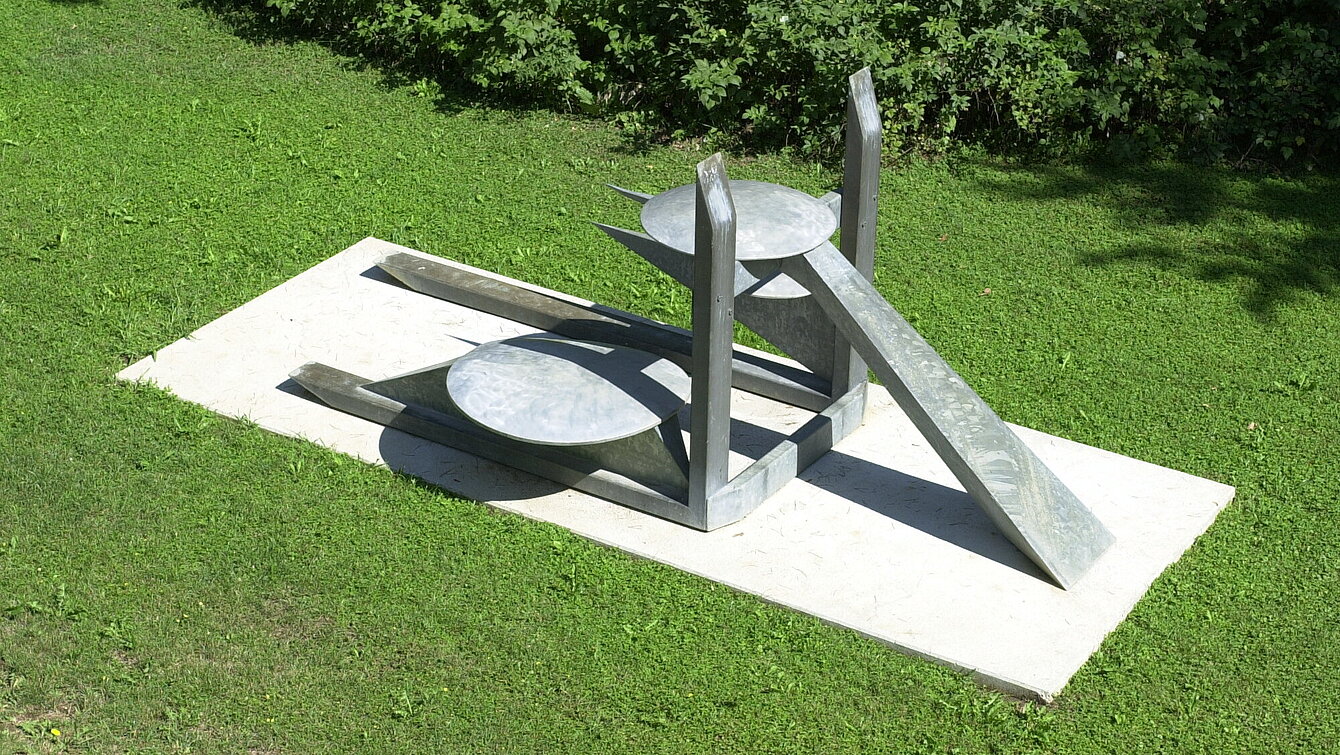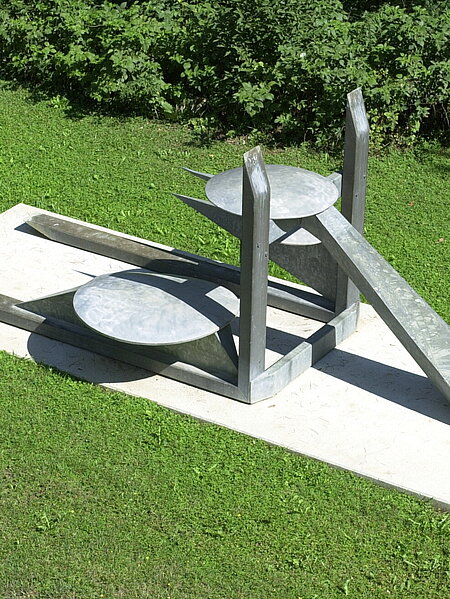This sculpture visualises the developments in art taking place during the late 1980s in that it finds a new way of relating both to the object and space. Two vertical and horizontal beams form its centre and provide support for the construction. The shapes appear to be finely balanced and convey a certain lightness, despite the heaviness of the material. The work gains its concrete meaning from the comparisons the viewer draws between the individual components of the sculpture and familiar objects.
Figur mit eingeschlossenen Steinstücken [Figure with enclosed stone elements]
Christoph Lissy, 1988


Image Credits
Sculpture overview
Werner Fenz
Location on map
Position 14
Owner
Artothek des Bundes
Artist biography
Christoph Lissy
Show all
About the sculpture
The “Figure” by Christoph Lissy is to be seen as a principal typology of design in a wider sense. In its character and artistic meaning, the work independently reflects artistic development of the late 1980s, a period in which both a new reference to the object and to space was looked for and found.
A consciously very obvious constructive element with two vertical “supports” and a horizontal pendant forms the tectonic centre, out of which the spatial-sculptural composition is developed. It is determined by an associative grammar. We are repeatedly tempted, but also invited to refer to familiar aesthetical objects when faced with this elegant work that still acts against the usual patterns of experience. Its audience moves into a world of allusions in the course of this process. The work gains its concrete meaning from this activated comparative process.
At one time it may be the technically constructive details which we pursue in our observation, whilst at other times the concrete connections attract our interest. Neither the dynamical layering of “roofed” forms nor their character suggesting lightness despite the material disturbs the arrangement based on solid static, or shake the finely tuned balance.
What is decisive is that the artist does not reduce everyday objects down to a new language of symbols – he develops this new language with a new self-found vocabulary. The elements resulting from this and put together only in a per se coherent space can only exist in this and no other constellation, despite various chains of association.



















